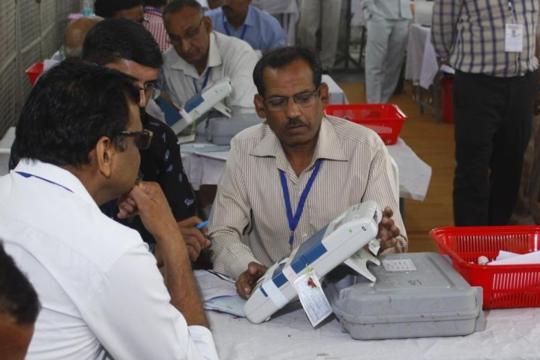
Dr. Satyavan Saurabh
SCHOOL, college, and university education are being adversely affected due to the lockdown implemented to curb the growing impact of the Kovid-19 epidemic. The coronavirus epidemic has shut down educational institutions around the world. The closure of schools, colleges, and universities, the regular lives of students and teachers, the disruption of education has created an unexpected situation and posed many unexpected challenges for administrators, teachers, teachers, parents, and students. As a result, education is increasingly moving towards e-education.
Prolonged school and university closures have not only had a short-term impact on the continuity of learning for over 285 million young learners in India, which will also have far-reaching economic and social consequences. The epidemic has also disrupted the higher education sector, which is an important determinant of the country’s economic future. A large number of Indian students enroll in universities abroad, especially in countries affected by the epidemic-hit US, UK, Australia, and China.
Such students are now barred from entering these countries. If the situation persists for a long time, there will be a huge drop in the demand for international higher education. However, the major cause of concern in everyone’s mind at this time is employment. Due to the current situation in India, corporates are afraid of withdrawing the job offer. Monitoring of the estimates of the Indian economy on unemployment in mid-March saw an increase from 8.4% to 23% in early April and an urban unemployment rate of 30.9%.
India is lagging behind some developing countries where digital education is being taken care of. The democratization of technology is now an important issue, including Internet connectivity, telecom infrastructure, online system capability, laptop/desktop availability, software, educational tools, online assessment tools, and more. According to data from the 2017–18 National Sample Survey, only 42 percent of urban and 15 percent of rural households had Internet access, and only 34 percent of urban and 11 percent of rural individuals used the Internet in the past 30 years.
It is true that many traditional educational institutions have poor infrastructure both in public and private. But these data suggest that most students are nearly two-thirds more likely to be spoiled at home than on any campus. There is also a need to examine the impact of smartphone capabilities and net connectivity in teaching.
But the college or university campus plays an important role in teaching. We have long seen that public educational institutions are exemplary of social inclusion and relative equality. In Indian conditions, this role is more important than the role of scholars. Public educational institutions are still the only place where people of all genders, classes, castes, and communities are alike. Female students, in particular, would be very bad if confined to their homes. Poor people are isolated and disinterested from backgrounds, how will their children take classes online when they are losing out on lunch.
Digital education can serve as a supplement in Mazaburi. But not forever, it can use materials and methods that are difficult to incorporate into the normal curriculum. It can be a support for lazy or incompetent teachers, and it can, of course, be a powerful aid for affluent students who are able to afford expensive education. But it is fraudulent to suggest that these can replace public education or are the only way that the majority can reach.
Without self-discipline or lack of good organizational skills, students can fall behind in studies in e-education mode. Students can feel lonely without any teachers and classmates. They may suffer from depression as a result. Poor Internet connections or outdated computers can make course access content frustrating. Lack of better internet connectivity and low speed of internet is the biggest challenge in the path of e-education in India. Practical or lab work is difficult in a virtual classroom. Rural areas of India lack power systems like urban areas, which can be a hindrance to e-education.
E-education is one of the major areas identified by the Ministry of Electronics and Information Technology for imparting education using educational tools and communication mediums. In fact, e-education in India is still in its infancy. The government has supported various e-learning programs to promote e-education. The Ministry of Electronics and Information Technology is actively emphasizing on developing equipment and technology to promote it. The Ministry of Electronics and Information Technology is promoting research and research projects focused on e-education in various educational institutions. These include curriculum development, research and research initiatives, human resource development projects and faculty training initiatives to improve literacy through distance education.
A large number of new users are accessing e-education through the Internet and other communication tools. The prevalence of the audio-visual system in education continues to grow. However, education should be continued. Students should keep learning. The learning period of the lockdown must be completed. Teachers should think creatively and introduce new ways of learning. In a country where access to the Internet and high-speed connectivity is a problem, and the digital divide is an issue, it is important to address the challenges. Those who are involved in education planning and administration should give serious thought to reduce the digital divide in the country and popularize traditional education as well as digital education.
However, the question still stands there that online education can be a future teaching, which should be a substitute for face-to-face education of the guru-disciple? Not yet seen this. The people of the government and academia are trying to make it better, but to overcome the hurdles faced in online education in a big country like India is still far away. The question of whether to conduct the experimental examination of examinations and technical subjects online still stands. Recently, the UGC guideline has also advocated pen-copy work. There is potential in the direction of online education but the challenges are not less. Better results cannot come unless challenges are better assessed.
- Author is a Research Scholar in Political Science at the University of Delhi.
Follow this link to join our WhatsApp group: Join Now
Be Part of Quality Journalism |
Quality journalism takes a lot of time, money and hard work to produce and despite all the hardships we still do it. Our reporters and editors are working overtime in Kashmir and beyond to cover what you care about, break big stories, and expose injustices that can change lives. Today more people are reading Kashmir Observer than ever, but only a handful are paying while advertising revenues are falling fast. |
| ACT NOW |
| MONTHLY | Rs 100 | |
| YEARLY | Rs 1000 | |
| LIFETIME | Rs 10000 | |










